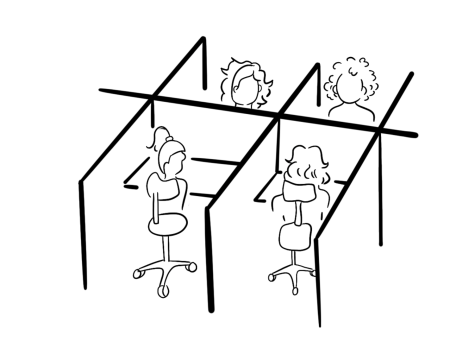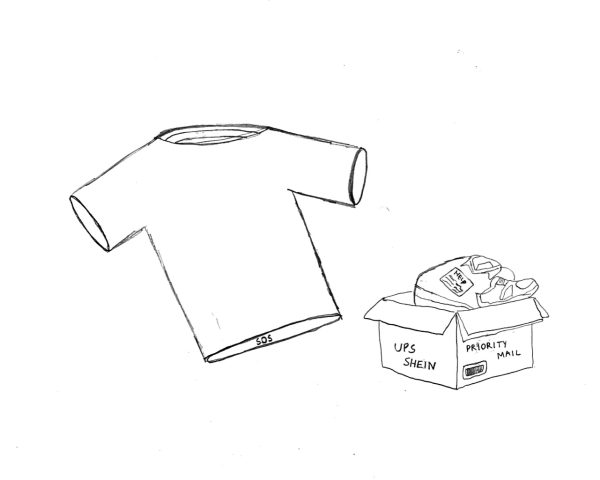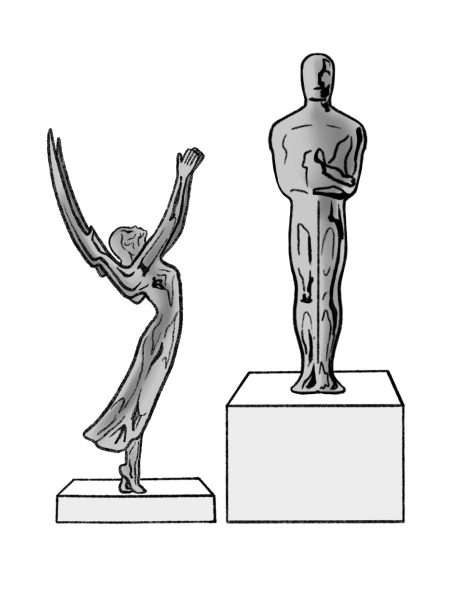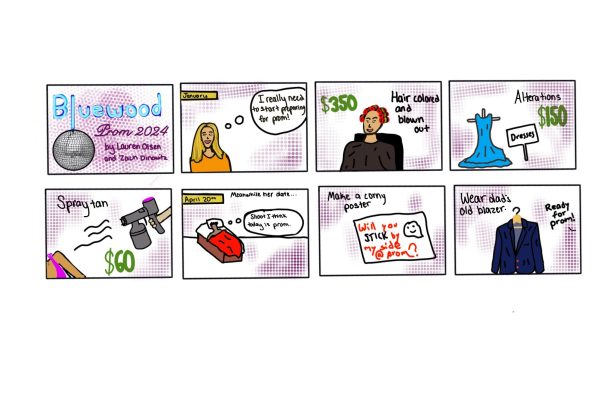Job applicants beware: Bias isn’t over with Title VII
March 31, 2022
High school students don’t often find themselves in an office cubicle. However, with changing expectations regarding qualifications for college admissions, teens are adding advanced internships to their resumes and learning professional etiquette younger than previous generations. Learning to adapt to a corporate environment has historically involved standardizing one’s appearance as a basic expectation. Corporate culture has changed in the past decade, however, and it’s time that employers address the bias (subconscious or not) that dictates wages, working hours and other office treatment.
This discrimination on the basis of race, gender and class can manifest through physical expression. According to a March 2022 Bark survey, 53 percent of students report altering their appearance, even m
inorly, to appear more professional in a job interview. This expectation of conformity in dress, hair and gender expression needs to be changed.
Assimilation in the workplace has roots from long before today’ corporate world. Take Beverly Jenkins, who in 1976 was terminated from her position at Blue Cross Mutual based on “race, sex [and] black styles of hair and dress.” With assistance from the Equal Employment Opportunity Commission created by the Civil Rights Act of 1975, Jenkins was able to file and win a lawsuit against her employer, upholding the illegality of workplace discrimination based on appearance.
However, workplace conformity is still prevalent today and accompanied by an increase in gender-fluid and gender-neutral fashion. For example, non-binary people and those who don’t present themselves as traditionally masculine or feminine, are sometimes urged to dress like a single-gender. These stereotypes not only enforce a negative workplace environment but eliminate the prosperity and creativity of those who don’t fit within the mold.
The lack of assurance for one’s appearance reflects a deeper issue of workplace discrimination based on gender, sex, race and even personal dress preference. Raymond F. Gregory recognizes this issue in his novel “Women and Workplace Discrimination: Overcoming Barriers to Gender Equality.” He notes that “Yet women are still denied full equality in the workplace. Even though they can now secure powerful professional, academic and corporate positions once reserved for men, the ever present ‘glass ceiling’ still deters the advancement of large segments of the female workforce.” The glass ceiling refers to an unofficial boundary or restriction that prevents women and minorities from exceeding in their respective fields. In accordance with appearance standards, white men specifically are most likely to be offered advantages. Although legislation supposedly regulates hiring practices, employers have proven not to be entirely unbiased.
However, the future of inclusion in the workplace isn’t entirely bleak; in fact, we are making leaps in the right direction. Compared to the civil rights era of explicitly hiring on the basis of race and gender, 2022’s job market is far more accepting and equalized. Newly accepted policies like blind application reviewing, auditions behind a curtain and affirmative action contribute to a more well-rounded workforce.
Traditionalism, specifically resisting social change, is the main argument used against acceptance in the workplace and the hiring process. The concept that people of color, as well as non-binary people and others

who don’t fit the traditional mold, should be exempt from professionalism is not only blatantly in contradiction to bills passed during the civil rights era but also limits the productivity and creative expression that would flourish in an accepting and inclusive environment.
Some might argue that an employee’s physical appearance attracts customers or creates a cohesive brand identity. However, in the retail and food service industry where this mentality is utilized, servers and cashiers should not be the commodity advertised, especially the way they present themselves. Hiring standards based on physical attributes contributes to a harmful workplace environment in which appearance is valued over quality of service.
Employers should consider blind application reviewing, auditions behind a curtain and affirmative action so they can hire the most qualified candidate instead of the most “traditionally professional-looking.” In an economy and job market recovering from a global pandemic, remote working allows for more flexibility than ever before, giving people more opportunity to look however they please without the increased constraints of in-person work. This pandemic-induced development invites flexible hours, budgeting and benefits. Along with these positive changes, corporate appearance must change as well. Welcome to the era of executive positions held by those with braids, androgynous dress or spiked blue hair.
Whether the interview is for a local waitressing position or a summer internship with Goldman Sachs, keep in mind that professionalism can look however you decide and that the workplace must keep up in a fast-adapting social climate.





















